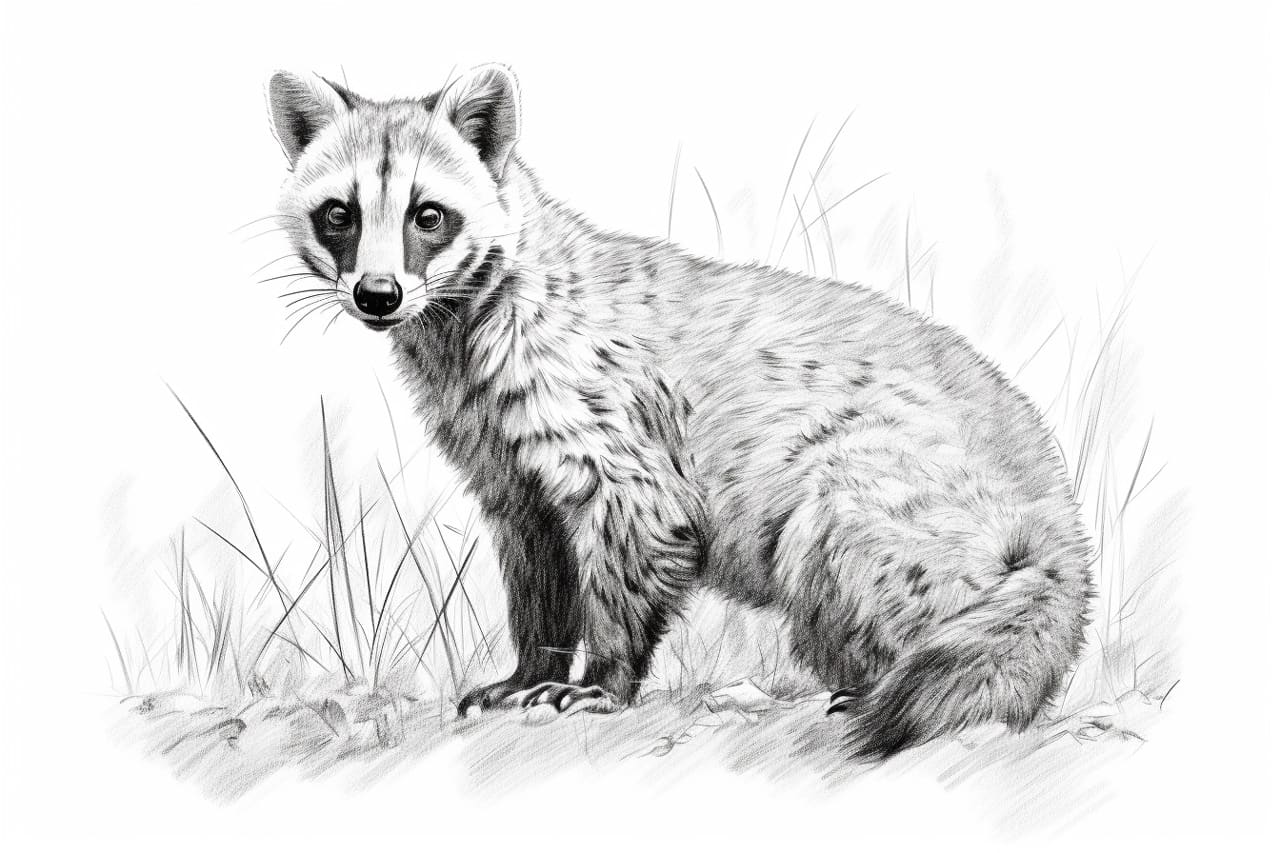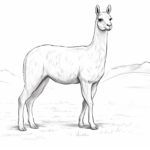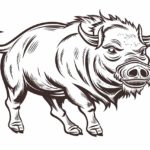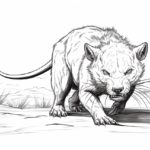Drawing a Coati can be a fun and rewarding artistic challenge! These fascinating creatures, also known as coatimundis, are members of the raccoon family and are native to the Americas. With their long, ringed tails, distinctive snouts, and agile movements, Coatis offer a unique subject for artists to capture on paper. In this guide, we will explore the key features of Coatis and provide step-by-step instructions to help you bring these charismatic animals to life through your drawings. So grab your pencils and paper, and let’s embark on a creative journey to capture the spirit of the Coati!
Materials Required
To draw a Coati, you will need the following materials:
- Pencil: For sketching the initial outline and details of the Coati.
- Paper: A smooth surface paper suitable for drawing.
- Eraser: For correcting mistakes and refining your drawing.
- Colored pencils or markers: To add color and details to your Coati drawing.
- Reference image: A picture of a Coati to use as a guide for your drawing.
- Optional: Drawing pens or fine liners for adding fine details to your drawing.:
How to Draw a Coati: a Step-by-step Guide
Step 1: Gather Your Materials
Gather all the necessary materials for drawing a Coati. You will need a pencil, eraser, paper, and any coloring materials you wish to use.
Step 2: Reference Image
Find a clear reference image of a Coati to use as a guide for your drawing. This will help you understand the animal’s anatomy and features better.
Step 3: Basic Outline
Start by lightly sketching the basic outline of the Coati using your pencil. Focus on capturing the general shape of the body, head, and tail.
Step 4: Facial Features
Draw the Coati’s facial features, including the eyes, nose, and mouth. Pay attention to the placement and proportions of these features based on your reference image.
Step 5: Ears and Tail
Sketch the Coati’s distinctive ears and long, ringed tail. Make sure to add details such as fur texture and any markings on the ears.
Step 6: Body Details
Add details to the Coati’s body, such as fur texture, markings, and any visible anatomy details. Take your time to carefully observe your reference image for accuracy.
Step 7: Finalize the Outline
Once you are satisfied with the overall shape and details of your Coati drawing, darken the lines to finalize the outline. Erase any unnecessary guidelines or sketch lines.
Step 8: Coloring
If you choose to color your Coati drawing, use colored pencils, markers, or other coloring materials to add depth and realism to your artwork. Refer to your reference image for accurate colors.
Step 9: Shading and Highlights
Add shading to your Coati drawing to create depth and dimension. Use your pencil to lightly shade areas that would be in shadow, and add highlights to areas that would catch the light.
Step 10: Final Touches
Review your drawing and make any necessary adjustments or additions to enhance the overall appearance of your Coati artwork. Sign your drawing and share it with others to showcase your artistic skills.
Conclusion
In conclusion, I want to commend you on your beautiful drawing of the Coati. Your attention to detail and use of shading truly bring the animal to life on the page. Keep honing your skills and exploring your creativity – with dedication and practice, your art will continue to flourish. Remember, art is a journey, so enjoy the process and never stop expressing yourself through your creations. Well done, and keep up the fantastic work!
Fun Facts About Coatis
Certainly! Here are some fun and interesting facts about Coatis:
- Coatis are members of the raccoon family (Procyonidae) and are closely related to raccoons.
- They are native to the Americas, ranging from the southwestern United States through Central America and into South America.
- Coatis have a distinctive long, ringed tail that can make up almost half of their total body length.
- They are highly social animals and live in groups called bands, which are typically led by a dominant male.
- Coatis are omnivores, meaning they eat a variety of foods including fruits, insects, small mammals, and eggs.
- They have a strong sense of smell and use their long, flexible snouts to root around for food.
- Coatis are excellent climbers and spend much of their time in trees, where they forage for food and rest.
- Female coatis give birth to litters of 4-6 young, which are born in tree nests and are cared for by the mother and other group members.
- Coatis are known for their playful and curious nature, often engaging in social grooming and play behaviors within their groups.
- Despite their cute appearance, coatis can be aggressive if provoked and should be admired from a safe distance in the wild.
Suggestions for Scenes and Settings for Coati Drawings
- Coati exploring a lush tropical rainforest with vibrant foliage and exotic flowers in the background.
- Coati playfully foraging for food among fallen leaves in a dense woodland setting.
- Coati climbing a tall tree with intricate bark patterns and dappled sunlight filtering through the leaves.
- Coati interacting with other wildlife such as colorful birds or butterflies in a meadow filled with wildflowers.
- Coati peeking out from behind a cluster of rocks in a desert landscape with cacti and mountains in the distance.
- Coati resting on a fallen log near a tranquil stream, with reflections of the surrounding trees in the water.
- Coati frolicking in a snowy forest during winter, with snow-covered branches and a soft layer of snow on the ground.
- Coati exploring a rocky shoreline by the ocean, with crashing waves and seagulls flying overhead.
- Coati scampering along a fence line in a rural farm setting, with barns and rolling hills in the background.
- Coati in an urban setting, climbing on a brick wall covered in graffiti with city buildings towering in the background.









